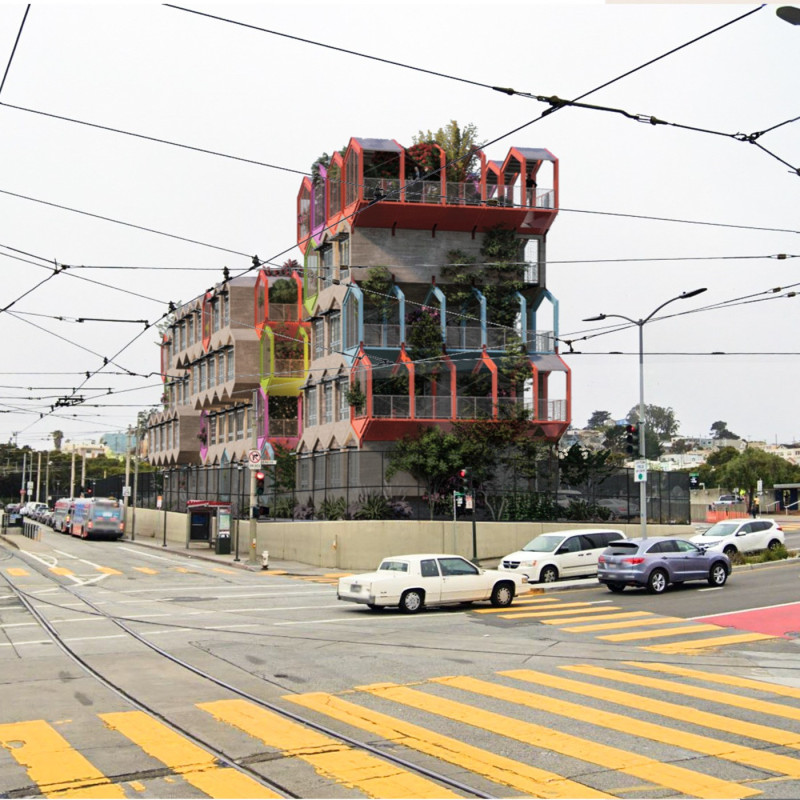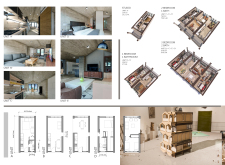5 key facts about this project
The design located in San Francisco seeks to meet the pressing need for affordable housing through a flexible and modular framework. Set against the backdrop of a diverse urban environment, the focus is on creating a functional living space that is both efficient and sustainable. The concept revolves around providing adaptable units that respond to the complexities of urban living, prioritizing the improvement of residential quality.
Design Concept
Central to the design is the use of pre-fabricated construction techniques that enable the housing units to be arranged in various configurations. This flexibility allows for creative stacking of units, maximizing available space while remaining sensitive to the surrounding area. The hexagonal shape not only provides structural strength but also enhances the project's ability to withstand seismic activity, a critical consideration in the region.
Integration with Urban Landscape
The project makes effective use of underutilized public land, such as parking lots and vacant areas, promoting urban infill. By revitalizing these spaces, the design encourages community interaction and creates welcoming shared environments. The incorporation of open frame units aids in developing terraces and community gardens, promoting social connections among residents and enhancing their relationship with nature.
Materials and Sustainability
The selection of materials plays a significant role in achieving sustainability goals. Precast concrete is a primary structural element due to its durability and thermal properties, making it ideal for efficient construction. Structural insulated panels offer high insulation levels that improve energy efficiency, aligning with passive house standards. Choosing steel studs and drywall for interior partitions ensures cost-effectiveness while maintaining flexible living options.
Green spaces are woven throughout the layout, enhancing both aesthetics and practicality. These areas provide opportunity for outdoor activities and foster a sense of community among residents. Each detail contributes to a holistic approach to modern living, balancing the need for affordable housing with the desire for an engaging environment.






















































